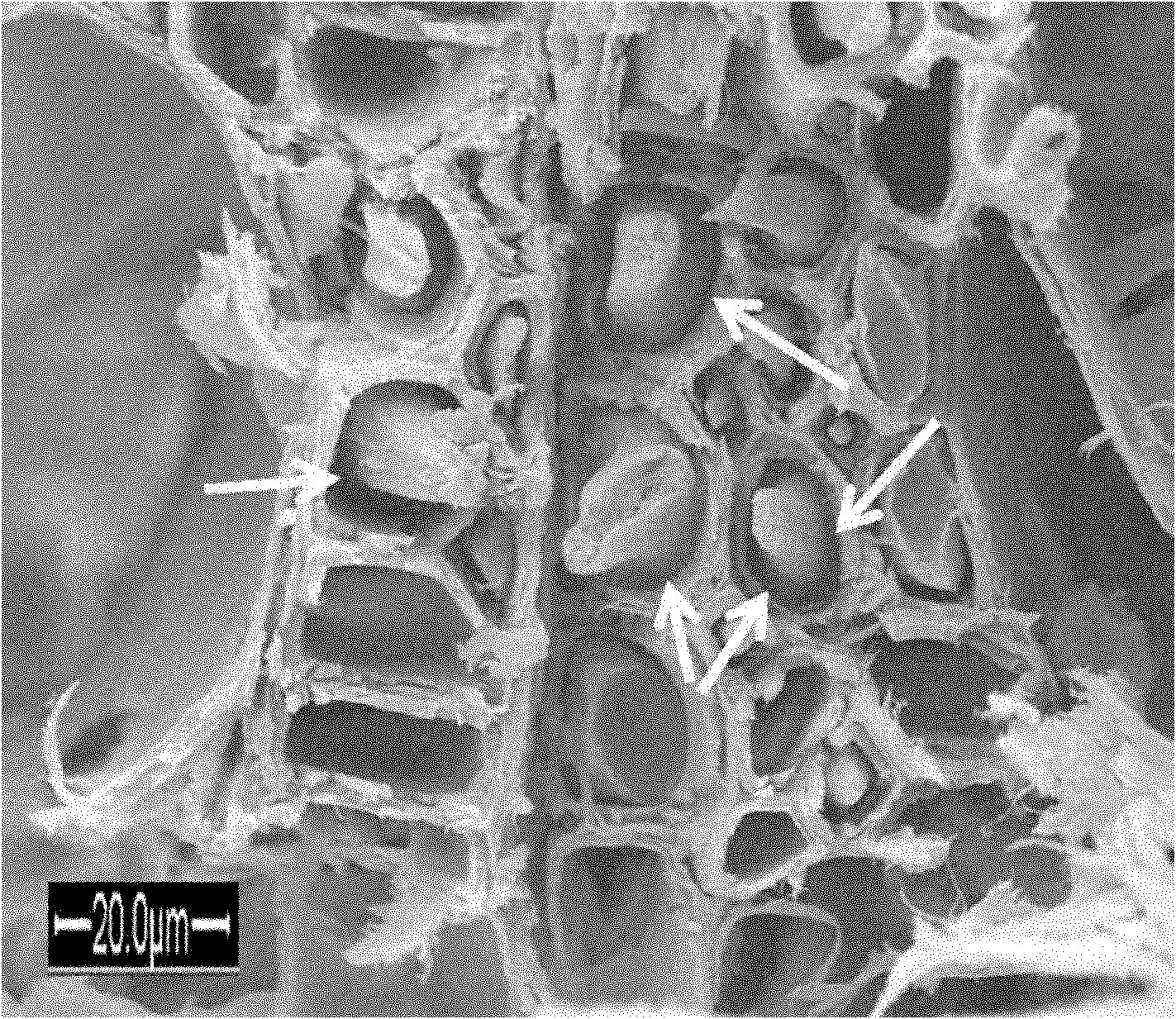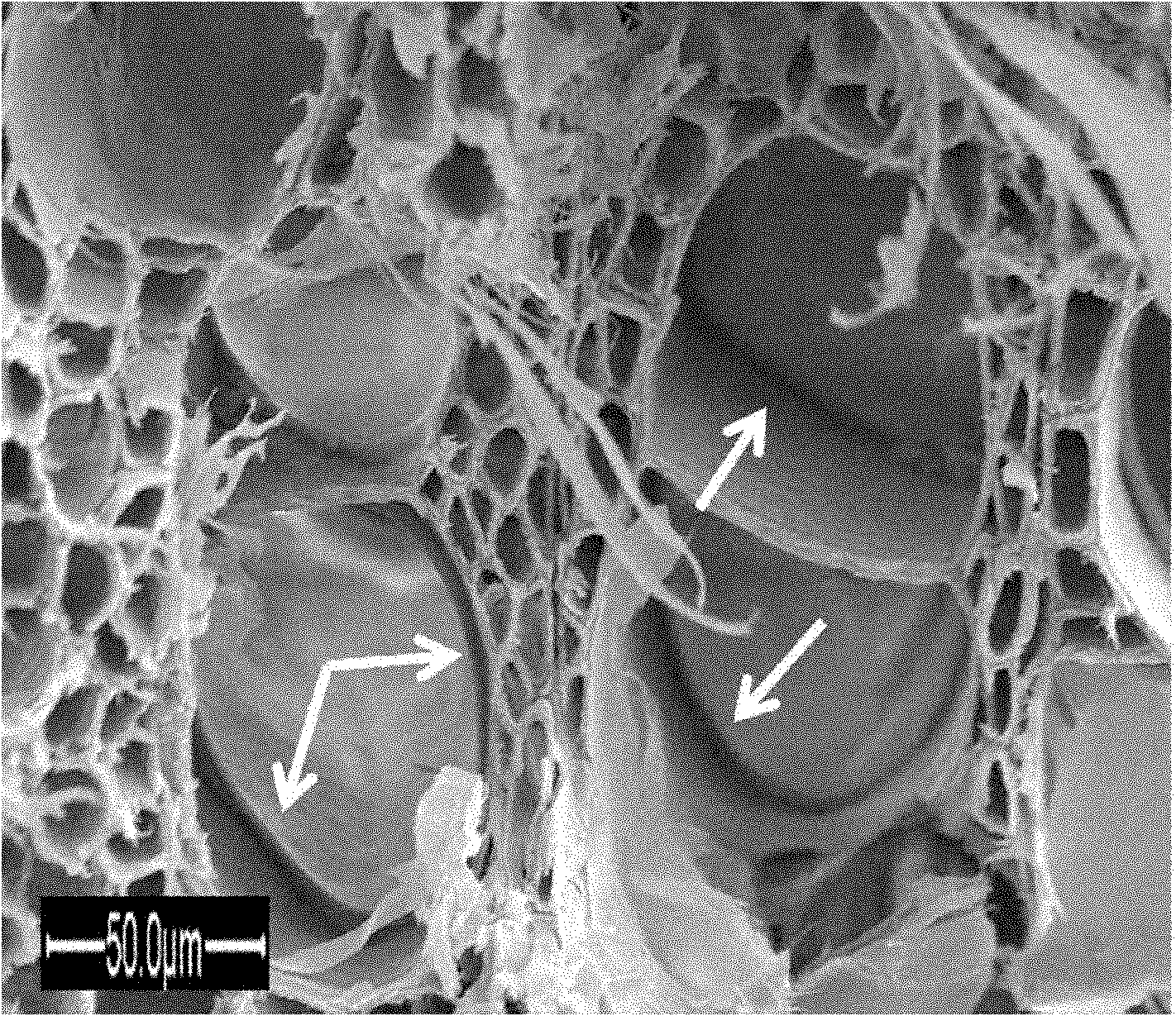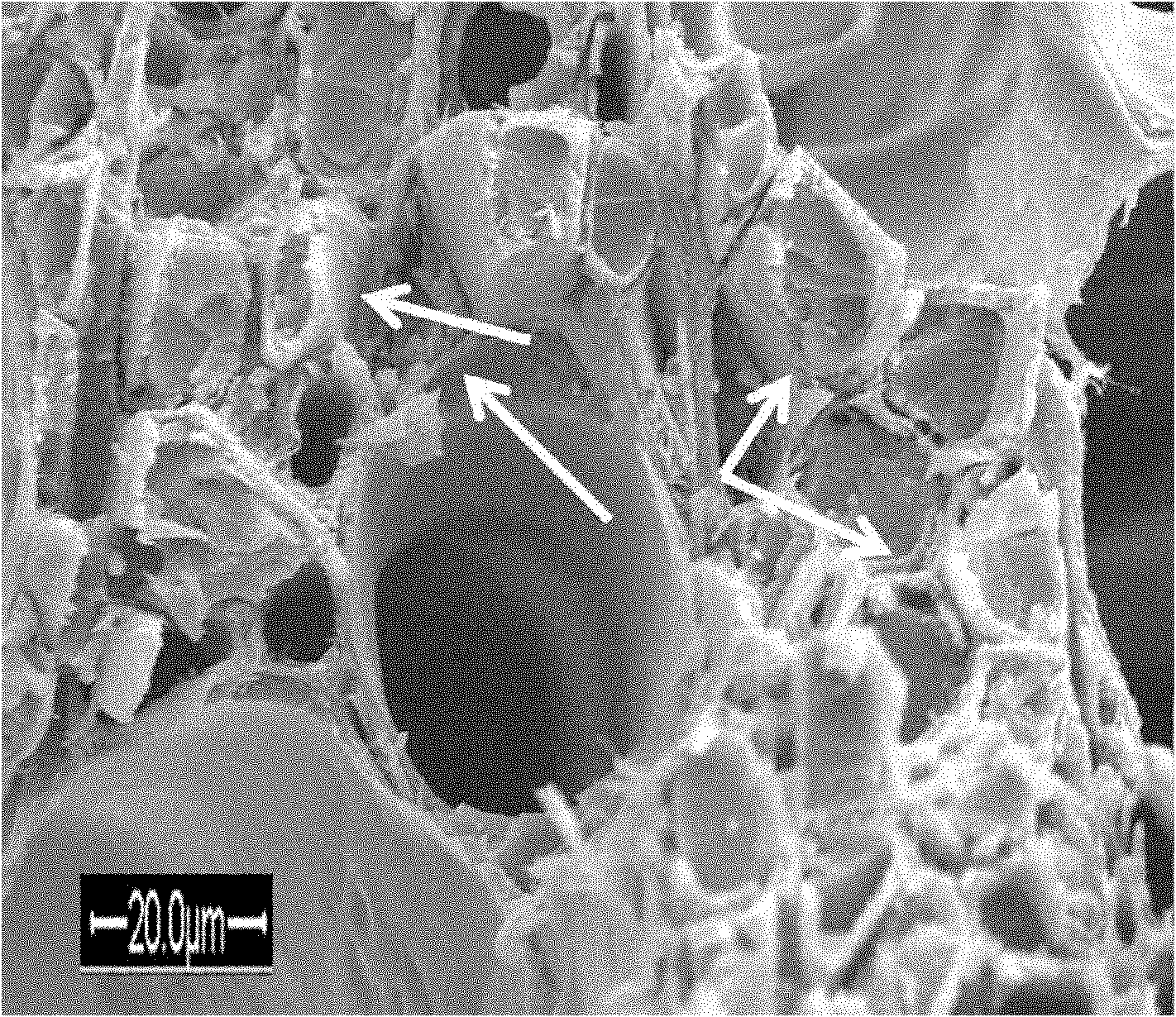Preparation method of wood plastic composite with good interface compatibility
A technology with good interfacial compatibility, applied in the direction of manufacturing tools, wood processing utensils, can opening and impregnating, etc., can solve the problems of poor durability, low mechanical strength of plastic composite wood, poor interface compatibility, etc., and achieve dimensional stability and Improved anti-corrosion performance, improved mechanical properties, and good interface compatibility
- Summary
- Abstract
- Description
- Claims
- Application Information
AI Technical Summary
Problems solved by technology
Method used
Image
Examples
specific Embodiment approach 1
[0007] Specific embodiment 1: The preparation method of the plastic composite wood with good interfacial compatibility in this embodiment is carried out according to the following steps: 1. Weigh 1 part of functional monomer and 3 to 6 parts of reactive monomer according to the ratio of parts by mass. monomer, and mix uniformly to obtain a monomer solution; 2. Take the initiator, grafting accelerator and acetone solvent, wherein the quality of the initiator accounts for 0.5% to 1% of the monomer solution quality obtained through step 1, and then The quality of grafting accelerator accounts for 5%~10% of the monomer solution quality that obtains through step one, and the quality of acetone is 2~3 times of grafting accelerator; Three, the grafting accelerator solution that takes by step 2 In the acetone weighed in step 2, the grafting accelerator solution is obtained, and then the grafting accelerator solution and the initiator weighed in step 2 are added to the monomer solution ...
specific Embodiment approach 2
[0011] Specific embodiment 2: The difference between this embodiment and specific embodiment 1 is that in step 1, 1 part of functional monomer and 3.5-5.5 parts of reactive monomer are weighed according to the ratio of parts by mass. Others are the same as in the first embodiment.
specific Embodiment approach 3
[0012] Embodiment 3: The difference between this embodiment and Embodiment 1 or 2 is that in step 1, 1 part of functional monomer and 4.5 parts of reactive monomer are weighed according to the ratio of parts by mass. Others are the same as in the first or second embodiment.
PUM
| Property | Measurement | Unit |
|---|---|---|
| Along the grain compressive strength | aaaaa | aaaaa |
| Static bending strength | aaaaa | aaaaa |
| Along the grain compressive strength | aaaaa | aaaaa |
Abstract
Description
Claims
Application Information
 Login to View More
Login to View More - R&D
- Intellectual Property
- Life Sciences
- Materials
- Tech Scout
- Unparalleled Data Quality
- Higher Quality Content
- 60% Fewer Hallucinations
Browse by: Latest US Patents, China's latest patents, Technical Efficacy Thesaurus, Application Domain, Technology Topic, Popular Technical Reports.
© 2025 PatSnap. All rights reserved.Legal|Privacy policy|Modern Slavery Act Transparency Statement|Sitemap|About US| Contact US: help@patsnap.com



